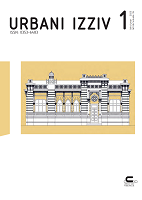Evolving mass tourism constructs and capitalist exploitation of the coast: From sustainable density and urban morphology to iconic megastructure
Evolving mass tourism constructs and capitalist exploitation of the coast: From sustainable density and urban morphology to iconic megastructure
Author(s): Carlos Rosa-Jiménez, Nuria Nebot-Gómez de Salazar, Alberto E. García-MorenoSubject(s): Architecture, Tourism
Published by: Urbanistični inštitut Republike Slovenije
Keywords: coastal tourism; iconic architectures; morphology;
Summary/Abstract: The tourism construct is a disruptive capitalist production of space that has generated and is generating new urban forms. Many architectural and morphological studies have specifically analysed its different models, but there is a lack of studies comparing their features. This comparative study examines four types of tourism construct related to the evolution of capitalism (including pre-Fordism, Fordism, and post-Fordism) and different types of tourist cities. Architectural iconicity, morphological patterns, and spatial metrics are analysed in relation to the economic, social, and cultural characteristics generated. The results suggest that high-density pre-Fordist and Fordist tourism constructs facilitate social relations and a greater capacity to generate the city, whereas lower-density post-Fordist constructs have higher environmental costs (an increase in private green areas and bodies of water) and social costs due to architectural iconicity. The article assesses the relationship between the architectural and urban variables to be considered in the planning tourist destinations in the capitalist production of tourist space.
Journal: Urbani izziv
- Issue Year: 34/2023
- Issue No: 1
- Page Range: 79-91
- Page Count: 13
- Language: English

